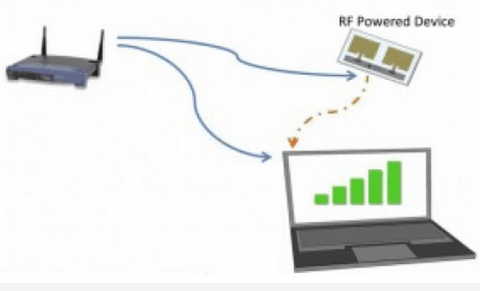Wi-Fi Backscatter Technology Connects Battery-Free Devices To Internet
With a perspective of providing no-power connectivity to ‘internet of things’ devices, a research team at University of Washington has developed a power-efficient technology called Wi-Fi Backscatter that will enable the battery-free devices to connect to Wi-Fi infrastructure. This technology provides internet connectivity to battery-free prototype devices by using radio frequency signals as a source of power. The new, ubiquitous communication system reuses present Wi-Fi infrastructure in order to extend the internet connectivity to these devices. Now, everyday battery-free objects will be able to connect to your internet profiles and can also store information about your day-to-day activities.
The technology is built upon the previous research called <a href="https://www.crazyengineers.com/threads/wireless-to-go-battery-less-with-ambient-backscatter-technique.70052">Wireless To Go Battery-less With Ambient Backscatter Technique</a> which showed that low-powered devices such as temperature sensors or wearable devices like wristwatch can run without batteries by leveraging existing radio and wireless signals present in the air. The following video demonstrates how the two devices without batteries can work by using existing TV or radio signals and can also communicate with each other.
The team has developed a novel ultra-low power tag prototype consisting of antenna and circuitry that can communicate to Wi-Fi enabled devices such as laptops, smartphones by using negligible amount of power. This prototype helps the battery-free devices to communicate through Wi-Fi by consuming less power than the power required by a typical Wi-Fi. The Wi-Fi backscatter tag can communicate with Wi-Fi devices with a speed of 1 kilobit per second and the range for communication between the two devices is about 2 meters. The team is planning to increase the range to about 20 meters.

The research will be published at the Association for Computing Machinery’s Special Interest Group on Data Communication‘s annual conference this month in Chicago. The project received funding from the Washington Research Foundation, UW Commercialization Gap Fund, the National Science Foundation, the Qualcomm Innovation Fellowship and the UW.
The technology is built upon the previous research called <a href="https://www.crazyengineers.com/threads/wireless-to-go-battery-less-with-ambient-backscatter-technique.70052">Wireless To Go Battery-less With Ambient Backscatter Technique</a> which showed that low-powered devices such as temperature sensors or wearable devices like wristwatch can run without batteries by leveraging existing radio and wireless signals present in the air. The following video demonstrates how the two devices without batteries can work by using existing TV or radio signals and can also communicate with each other.
The research will be published at the Association for Computing Machinery’s Special Interest Group on Data Communication‘s annual conference this month in Chicago. The project received funding from the Washington Research Foundation, UW Commercialization Gap Fund, the National Science Foundation, the Qualcomm Innovation Fellowship and the UW.
Source: <a href="https://www.washington.edu/news/2014/08/04/no-power-wi-fi-connectivity-could-fuel-internet-of-things-reality/" target="_blank" rel="nofollow noopener noreferrer">No-power Wi-Fi connectivity could fuel Internet of Things reality | UW News</a>
0
